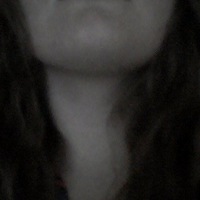
ааааааа помогите пожалуйстааааа!!!!!!1.Какие вещества в растворе образуют следующие ионы: H3O+,
Br-, CO2- (сверху) 3,HPO2- 4, PO3- 4, HSO-4, MgOH+, Fe3+2. Напишите формулы трех неэлектролитов.3. Напишите формулы веществ, в водных растворах которых находятся следующие ионы:a. Ba2+ и Cl-б. Fe3+ и NO-3в. Na+ и CO2- 44.Смешали 200г 20%-ного раствора гидроксида натрия и 200г 10%-ного раствора серной кислоты. В какой цвет окрасится фиолетовый лакмус в полученном растворе?Какое вещество образуется и каковы масса и количество вещества этого соеденения?5. Вычислите массу сульфата бария, образующегося при взаимодействии 200г 7%-ного раствора серной кислоты и раствора, в котором содержится 2 моля хлорида бария. 0
0
 0
0
Ответы на вопрос
 Внимание! Ответы на вопросы дают живые люди. Они могут содержать ошибочную информацию, заблуждения, а также ответы могут быть сгенерированы нейросетями. Будьте внимательны. Если вы уверены, что ответ неверный, нажмите кнопку "Пожаловаться" под ответом.
Внимание! Ответы на вопросы дают живые люди. Они могут содержать ошибочную информацию, заблуждения, а также ответы могут быть сгенерированы нейросетями. Будьте внимательны. Если вы уверены, что ответ неверный, нажмите кнопку "Пожаловаться" под ответом.

1. Н3О+ - это гидратированный протон, следовательно он будет в растворах кислот, или воды ( в малых количествах вода диссоциирует на ионы). Думаю, можно написать HCl.
Br- - в растворе NaBr, СО3(2-) - в растворе Na2CO3, HPO4(2-) - в растворе K2HPO4, PO4(3-) - в растворе Na3PO4, HSO4- - в растворе KHSO4, MgOH+ - в растворе MgOHCl, Fe3+ - в растворе Fe(NO3)3.
2.
AgCl, Ca3(PO4)2, BaS.
3.a)BaCl2, б)Fe(NO3)3 в) Na2CO3 ( CO4(2-) - не бывает).
4.
2NaOH + H2SO4 = Na2SO4 + 2H2O
m(NaOH) = m(p-paNaOH)*W(NaOH) = 200*0,2 = 40 г
n(NaOH) = 40/40 = 1 моль
m(H2SO4) = 200*0,1 = 20 г
n(H2SO4) = 20/98 = 0,2 моль
Серная кислота в недостатке. Гидроксид натрия в избытке. Серная кислота прореагирует полностью, а гидроксид останется, значит среда раствора будет щелочной, а лакмус окрасится в синий цвет.Считаем по серной кислоте:
n(Na2SO4) = n(H2SO4) = 0,2 моль.
m(Na2SO4) = 0,2*142 = 28,4 г.
Na2SO4 - сульфат калия.
5.
BaCl2 + H2SO4 = BaSO4 + 2HCl
m(H2SO4) = m(p-paH2SO4)*W(H2SO4) = 200*0,07 = 14 г
n(H2SO4) = m(H2SO4)/M(H2SO4) = 14/98 = 0,14 моль.
Серная кислоты в недостатке, она прореагирует полностью, по ней и считаем.
n(BaSO4) = n(H2SO4) = 0,14 моль.
m(BaSO4) = n(BaSO4)*M(BaSO4) = 0,14*133 = 32,6 г.
 0
0
 0
0

Ions in Solution
The following substances form the given ions in solution:
1. H3O+: This ion is known as the hydronium ion and is formed when water acts as an acid by donating a proton (H+). It is commonly found in acidic solutions. 2. Br-: This ion is the bromide ion and is formed when a bromine atom gains an electron. It is commonly found in solutions containing bromine compounds. 3. CO2-3: This ion is the carbonate ion and is formed when carbon dioxide dissolves in water. It is commonly found in solutions of carbonates and bicarbonates. 4. HPO2-4: This ion is the hydrogen phosphite ion and is formed when phosphorous acid (H3PO3) donates a proton. It is commonly found in solutions of phosphorous acid. 5. PO3-4: This ion is the phosphite ion and is formed when phosphorous acid (H3PO3) donates two protons. It is commonly found in solutions of phosphorous acid. 6. HSO-4: This ion is the hydrogen sulfate ion and is formed when sulfuric acid (H2SO4) donates a proton. It is commonly found in solutions of sulfuric acid. 7. MgOH+: This ion is the magnesium hydroxide ion and is formed when magnesium hydroxide (Mg(OH)2) dissolves in water. It is commonly found in solutions of magnesium hydroxide. 8. Fe3+2: This ion is the iron(III) ion or ferric ion and is formed when an iron atom loses three electrons. It is commonly found in solutions containing iron(III) compounds.
Formulas of Non-electrolytes
Non-electrolytes are substances that do not dissociate into ions when dissolved in water. Here are the formulas of three non-electrolytes:
1. Glucose: The formula for glucose is C6H12O6. It is a simple sugar and does not dissociate into ions in water. 2. Sucrose: The formula for sucrose is C12H22O11. It is a disaccharide and does not dissociate into ions in water. 3. Ethanol: The formula for ethanol is C2H5OH. It is an alcohol and does not dissociate into ions in water.
Ions in Aqueous Solutions
The following are the formulas of substances in aqueous solutions that contain the given ions:
a. Ba2+ and Cl-: Barium chloride (BaCl2) dissociates into Ba2+ and 2 Cl- ions in water. b. Fe3+ and NO-3: Iron(III) nitrate (Fe(NO3)3) dissociates into Fe3+ and 3 NO-3 ions in water. c. Na+ and CO2-3: Sodium carbonate (Na2CO3) dissociates into 2 Na+ and CO2-3 ions in water.
Color Change and Compound Formation
When a 20% solution of sodium hydroxide (NaOH) and a 10% solution of sulfuric acid (H2SO4) are mixed, a neutralization reaction occurs. The products of this reaction are water (H2O) and sodium sulfate (Na2SO4). The color change of violet litmus in the resulting solution depends on the concentration of the solutions used. If the solutions are dilute, the litmus may turn red or pink, indicating acidity. However, if the solutions are concentrated, the litmus may turn blue, indicating alkalinity.
The mass and amount of sodium sulfate formed can be calculated using the principles of stoichiometry and the given masses of the solutions. However, the exact values cannot be determined without knowing the volumes of the solutions used.
Calculation of Barium Sulfate Mass
To calculate the mass of barium sulfate (BaSO4) formed, we need to know the balanced chemical equation for the reaction between sulfuric acid (H2SO4) and barium chloride (BaCl2). Assuming the reaction goes to completion, the balanced equation is:
H2SO4 + BaCl2 -> BaSO4 + 2 HCl
From the equation, we can see that 1 mole of barium sulfate is formed for every mole of barium chloride reacted. Therefore, the number of moles of barium sulfate formed can be calculated using the molar mass of barium chloride (BaCl2) and the given mass of the 7% sulfuric acid solution. However, the molar mass of barium sulfate is needed to calculate its mass.
Unfortunately, the molar mass of barium sulfate is not provided in the question, so it is not possible to calculate the mass of barium sulfate formed without this information.
I hope this helps! Let me know if you have any further questions.
 0
0
 0
0
Топ вопросов за вчера в категории Химия
Последние заданные вопросы в категории Химия
-
Математика
-
Литература
-
Алгебра
-
Русский язык
-
Геометрия
-
Английский язык
-
Химия
-
Физика
-
Биология
-
Другие предметы
-
История
-
Обществознание
-
Окружающий мир
-
География
-
Українська мова
-
Информатика
-
Українська література
-
Қазақ тiлi
-
Экономика
-
Музыка
-
Право
-
Беларуская мова
-
Французский язык
-
Немецкий язык
-
МХК
-
ОБЖ
-
Психология
-
Физкультура и спорт
-
Астрономия
-
Кыргыз тили
-
Оʻzbek tili



















